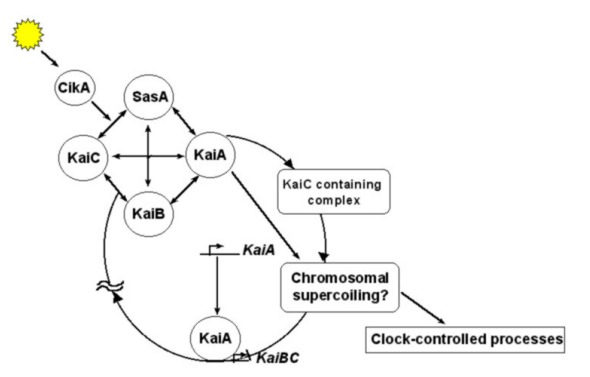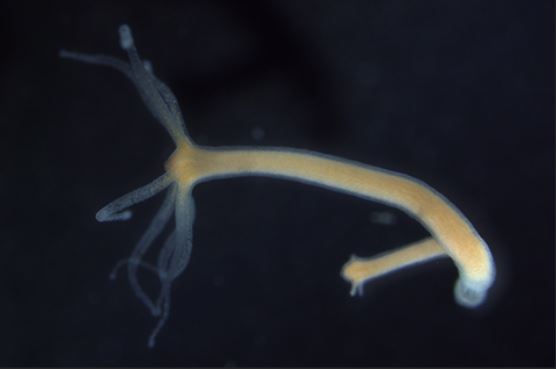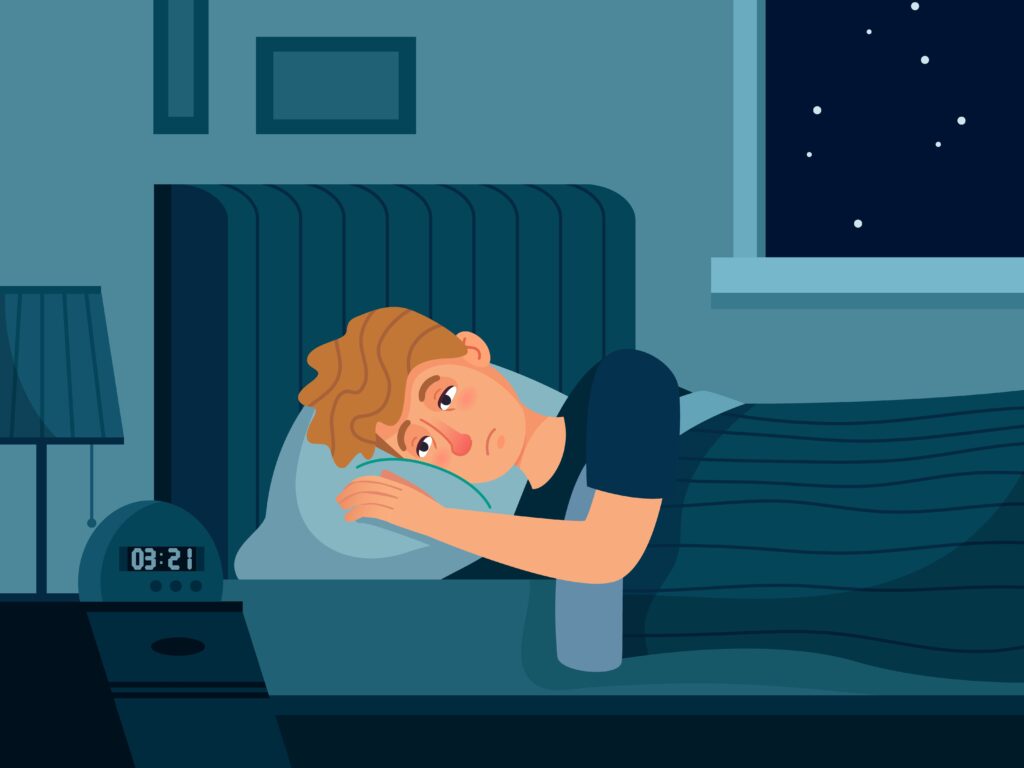Author: Harshini Anand
Editor: Dr. Jitendra Kumar Sinha
Let’s start talking about this by asking a question. Have you ever slept so soundly that you lost track of time?
By definition, sleep is a periodic, natural, reversible, and near-total loss of consciousness, but we’d like to call it a time machine to breakfast. And we spend 1/3rd of our life sleeping (that’s almost 229,961 hours or 26 years!) and one-quarter of that time (approximately 6 years), active dreaming! Sleep is like an assignment deadline. The more we try to put it off, the more stressed and tired we become.

It is a ubiquitous phenomenon. something we share with all higher vertebrates, and possibly, all animals. Shrews rarely sleep whereas rabbits and giraffes are found to do so occasionally, for no longer than a few minutes. In animals like dolphins and seals, sleep swings between the two cerebral hemispheres. The stimulation caused one to show signs of wakefulness and another showed characteristics of sleep.
Sleep is as important for living as breathing or eating, and a lack of it can be disastrous.

But what exactly is Sleep?
Sleep is characterized by two main phases with five distinct stages each defined by unique brainwave patterns, transitioning from alpha waves, clearly visible on an EEG reading –
Sleep comprises two primary phases and four distinct stages, each of which is distinguished by different brainwave patterns that develop from alpha waves and may be easily seen on an EEG scan.
- Non-rapid Eye movement sleep – 3 Stages
- Rapid eye movement sleep
Non-Rapid Eye movement sleep, also known as NREM or Slow wave sleep is a state in which the sleep is dominated by slow, yet large EEG Rhythms implying that the majority of sensory inputs do not even make it to the cortex, resulting in a faint or non-existent sensation. During this stage, there is reduced muscular movement, a lower body temperature, and slower breathing. NREM sleep takes up around 75% of our total sleep duration.
- NREM 1 – This stage begins with alpha and progresses to theta waves. Ever had a feeling like you’re falling while sleeping? This occurs throughout this phase. This phenomenon, often referred to as Hypnagogic jerk, is a violent twitch that occurs as you drop off to sleep and is typically accompanied by visual hallucinations.
- NREM2 – This stage is distinguished by the EEG brain wave pattern known as the “Sleep Spindles”, believed to be associated with activity in the thalamus and the neocortex. They could signify sensory shutdown, suppressing the information reaching the thalamus to prevent you from waking up. They are also believed to be involved in motor sequence learning and long-term memory processing. Additionally, teeth grinding frequently occur during this sleep stage.
- NREM 3 – This stage is characterized by Delta waves. Also, the stage wherein bedwetting, and night terrors (These are different from nightmares, which usually occur during REM sleep) take place.
Now your body begins with physical repair and shuts down any possible sensory impulses, which can cause you to sleep like a baby.
This is also the deepest stage of your sweet slumber, with the highest arousal threshold. This means it’s difficult to wake up at this point, and if you do, you may feel lethargic. In this stage, you could even Sleep-eat and have no memory of the incident the next morning because your cognitive functioning and judgment are severely impaired. EEG shows a lot of high voltage slow waves, as you gradually drift into one of the most important stages of sleep – REM SLEEP.
REM as defined by William Dement, a sleep researcher from Stanford is ‘An active hallucinating brain in a paralyzed body.’ This is the stage that grants vivid visual dreams. It is also called PARADOXICAL SLEEP because your brain is just as active as when you’re wide awake, but your brainstem is blocking the signals to prevent you from enacting your dream. Your entire body is immobilized, except for your eyes and respiratory muscles. Even the oxygen consumption of your brain during this stage is higher than when your brain is wide awake and concentrating on resolving problems. Basically, During REM sleep your brain seems to be doing anything BUT resting!
If provoked during this stage, you will be capable of awakening your inner storyteller and narrating your visually detailed, bizarre dreams.
What is going on in your brain when all this is taking place?
This is possible because of the interaction between many neuromodulators and the synchronization of brain regions.

The ascending reticular activating system or ARAS of the brain is believed to play a key role in maintaining wakefulness. Lesions in this area can cause sleep and coma, indicating that it is essential for keeping us awake. ARAS is formed by a group of neurons extending from the medulla to the hypothalamus.
The Suprachiasmatic nucleus or SCN in the Hypothalamus also plays an important role in the circadian rhythm or the body clock, a 24-hour cycle, which is what makes you drowsy at night, and wide awake during the day. A model with two processes: Process C (Circadian) and Process S (Homeostatic) helps explain the functioning of the circadian rhythm. SCN also inhibits Melatonin (the sleep hormone) secretion during the daytime with the help of inhibitory GABAergic neurons.
- NREM is generated in the basal forebrain and anterior hypothalamus with GABA and Galin Neurotransmitters.
- REM is generated in the pons and mesencephalon areas. The basal forebrain also helps in cortical activity production with the help of Acetylcholine during REM sleep.
Ever felt emotional or motivational after waking up from a dream?
This is because of increased activity in the Limbic areas – Amygdala, hippocampal formation, and Anterior Cingulate Cortex – because these regions are major emotional regulators.
Major Neurotransmitters and Neuromodulators Involved
- Acetylcholine is a major neurotransmitter for sleep. Neurons containing ACh are generally active during wakefulness and REM Sleep. Inhibition causes immobility and slow EEG waves.
- Norepinephrine (found in the Locus Coeruleus) – helps in generating attentiveness when you require high attention (like when you’re solving a complex math problem). This circuit is silenced during REM.
- Glutamate given its excitatory nature promotes wakefulness. Serotonin helps promote wakefulness and suppress REM sleep.
- Dopamine helps inhibit sleep-promoting neurons and stimulate wake-promoting neurons.
- Histamine increases cortical activation and wakefulness. Reported with highest firing rates during wakefulness, lowest during REM.
- Orexins fire during wakefulness, and silent during REM sleep. Ever had a sudden burst of wakefulness when you’re highly motivated? Orexins are what cause that. This also is an essential link between metabolic function and sleep regulation.
- GABA promotes sleep by inhibiting arousal during REM and NREM. MCH also called melanin-concentrating hormone fire at a high rate during REM sleep, fires less during NREM, and are found to be inactive during wakefulness.
- Adenosine is the neurotransmitter responsible for the sleepy feeling you get after you pull an all-nighter.
This is the homeostatic accumulator of the need to sleep.
WHY Do we need sleep?
Just as unbelievable as it sounds, there is still no concrete scientific consensus as to why we do it. But based on lesion and abnormality studies, sleep researchers have accepted that the purpose of Non-REM sleep is largely restorative. Sleep helps in the recuperation, rest, and repair of neurons. Recent findings suggest that sleep also plays an important role in helping remove toxins that build up while you are awake.
The pituitary glands release growth hormones during sleep. This is why babies sleep all the time.
One of the most important functions of sleep, as scientists believe is its role in mental function, that is, improving memory, boosting creativity, and cognitive maintenance. This is backed up by an analysis of sleep-deprived people who reported reduced cognition, delayed reaction, crankiness, irritability, and sudden mood shifts. Sleep deprivation is also linked to major diseases including diabetes, heart disease, stroke, cancer, and poor mental health among many others. It is also linked to weight gain because hunger arousing and suppressing hormones go gaga with the lack of sleep and the immune system begins functioning abnormally.
Sleep Disorders like Restless Legs Syndrome, Insomnia, REM Behavior disorder, Sleep Apnea, and Narcolepsy are conditions that impair the ability of a person to sleep well regularly causing a negative impact on their lives.
Randy Gardner and Sleep Project
Randy Gardner was a 17-year-old high schooler who broke the world record for nonstop wakefulness. He decided that he would stay awake for 11 days (264 hours) without caffeine, or drugs, for the San Diego science fair project.
After 2 days he became irritable and nauseated, had memory issues, and could not watch television. On the 4th day, he started having mind delusion and fatigue. On the 7th day, he had tremors, he hallucinated, his speech slurred, and his EEG showed no alpha rhythms. However, when he finally went to bed, he slept for 15 hours, stayed awake for the next 24 after waking up, and slept for 10 more hours before his schedule returned to normalcy with no long-lasting symptoms.
References –
- Eric Kandel, James Schwartz, Thomas Jessell, Steven Siegelbaum, A.J Hudspeth – Principles of Neural Science
- Larry R. Squire, Darwin Berg, Floyd E Bloom, Sascha Du Lac, Anirvan Ghosh, Nicholas C Spitzer – Fundamental Neuroscience
- Schwartz, M. D., & Kilduff, T. S. (2015). The Neurobiology of Sleep and Wakefulness. The Psychiatric clinics of North America, 38(4), 615–644. https://doi.org/10.1016/j.psc.2015.07.002
- Sinha JK, Vashisth K, Ghosh S. Epidemiological studies on sleep quality can help in improving public mental health initiatives and development of better sleep technologies. Sleep Epidemiol. 2022;2:100049. doi:https://doi.org/10.1016/j.sleepe.2022.100049
- Sinha JK, Vashisth K, Ghosh S. The importance of sleep studies in improving the health indices of a nation. Sleep Med X. 2022;4:100049. doi:https://doi.org/10.1016/j.sleepx.2022.100049
- Falup-Pecurariu, C., Diaconu, Ș., Țînț, D., & Falup-Pecurariu, O. (2021). Neurobiology of sleep (Review). Experimental and therapeutic medicine, 21(3), 272. https://doi.org/10.3892/etm.2021.9703
Related Articles




